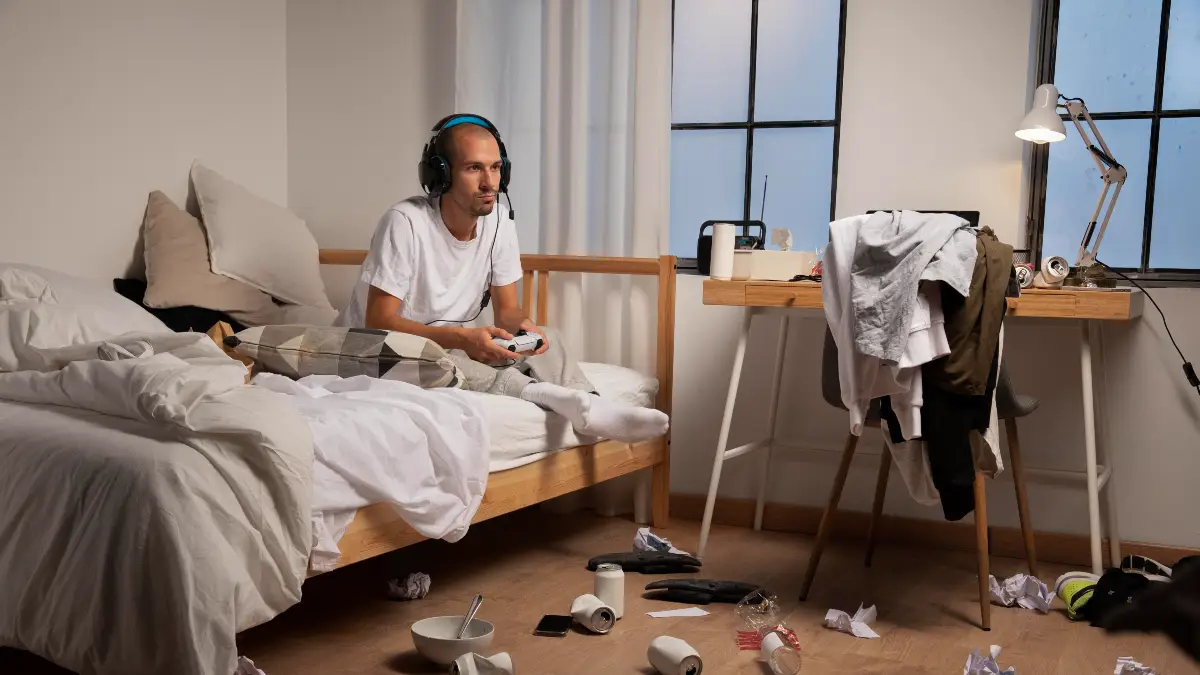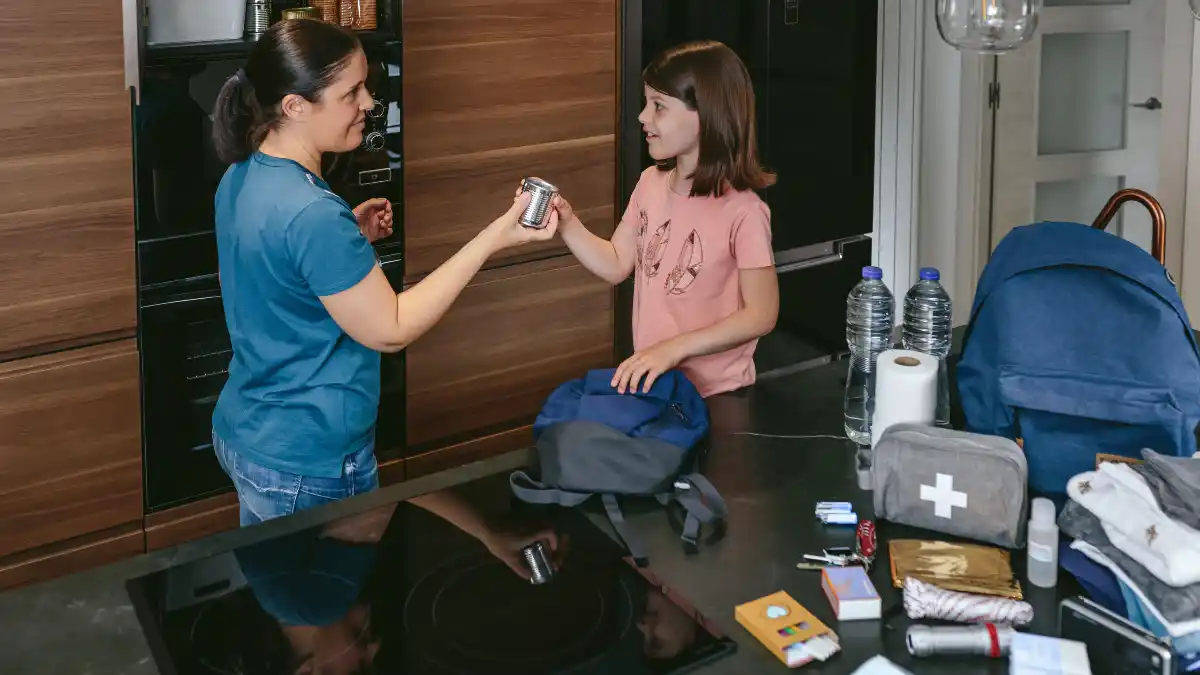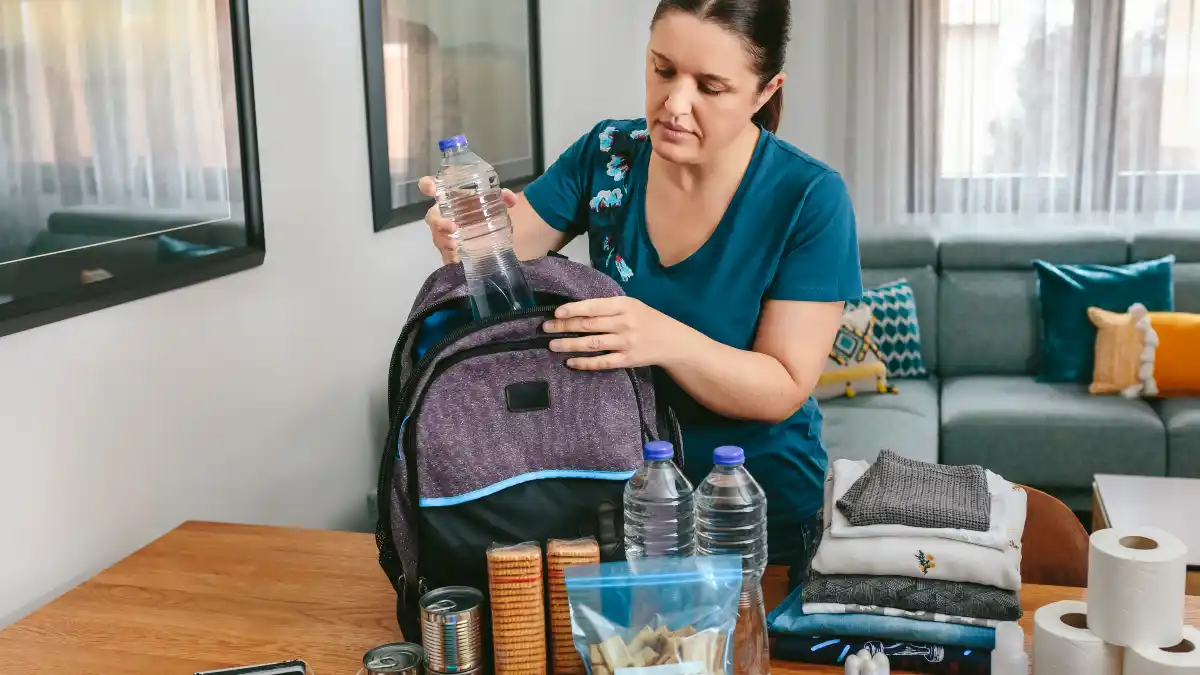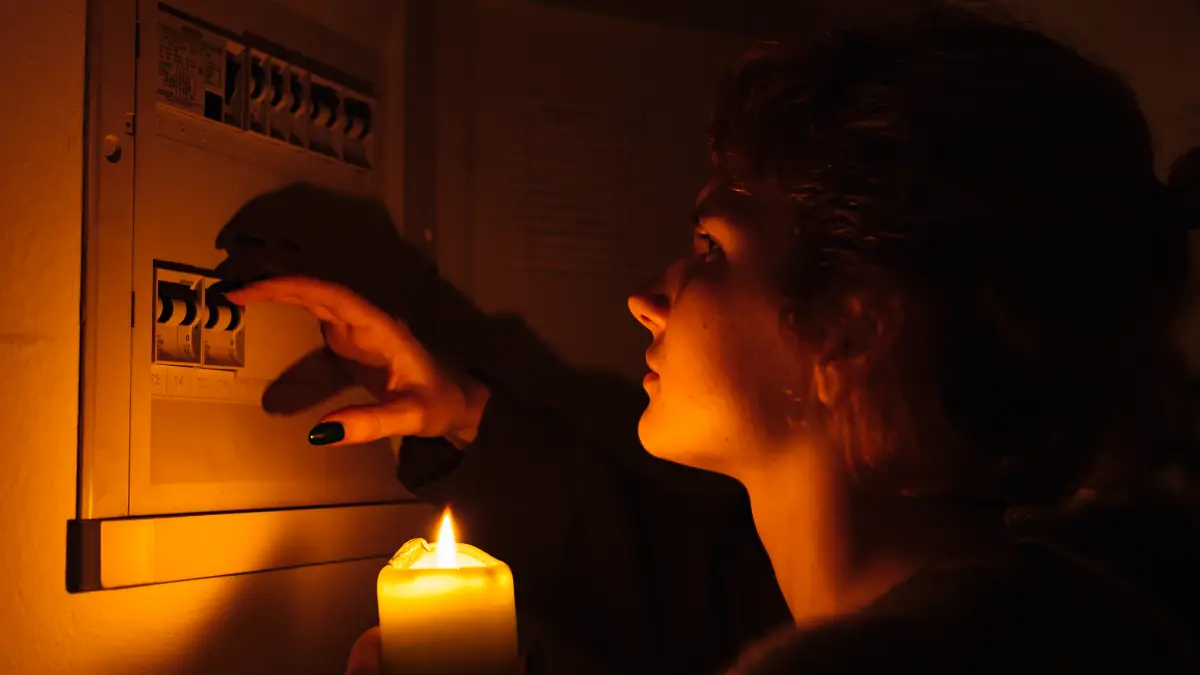Living in a 500-square-foot apartment doesn’t mean you can’t be prepared for emergencies. In fact, it might be even more critical.
When disaster strikes—whether it’s a power outage, fire, or natural disaster—apartment dwellers face unique challenges that homeowners don’t. Limited storage space, building restrictions, and shared infrastructure create real vulnerabilities.
Recent studies show apartment residents are 2.5 to 11 times less prepared than homeowners, yet a complete emergency kit can fit in just 10 square feet of your space.
With smart storage solutions and strategic planning, you can build a comprehensive emergency plan that works within your constraints, not despite them.
The Hidden Disadvantages Apartment Dwellers Face in Disasters

Living in an apartment might seem safer during emergencies—you’re surrounded by neighbors and building staff, right?
The reality tells a different story. Research shows apartment dwellers are significantly less prepared than homeowners, and the gap isn’t just about income or awareness.
The Statistical Reality of Apartment Vulnerability
Studies from Oakland County reveal a startling preparedness gap: multi-unit dwellers are 2.5-11 times less likely to have essential emergency supplies than single-family homeowners.
The specifics paint an even clearer picture—apartment residents are 11.1 times less likely to have backup power generators, 10.9 times less likely to have alternative heat sources, and 2.5 times less likely to maintain a basic three-day water supply.
What’s particularly concerning? These gaps persist even when controlling for income, suggesting the problem isn’t just financial—it’s structural.
Physical Constraints That Limit Your Options
The average studio apartment offers just 1-2 closets for all your belongings, leaving little room for emergency supplies. Unlike homeowners, you don’t have basements, garages, or sheds for additional storage.
Your physical space isn’t the only limitation. Shared building infrastructure means you have limited control over vital systems like water, electricity, and heating.
Building codes and lease agreements often prohibit life-saving equipment that homeowners take for granted—generators, propane stoves, and even grills are typically banned from multi-unit buildings.
Urban-Specific Emergency Risks
Apartment living comes with unique emergency risks. Cooking fires lead residential emergencies, with 29% involving unattended equipment—a particular danger in small, open-plan spaces where fires spread faster.
Power outages hit hard too, with 70% of affected households experiencing outages lasting six or more hours. Detroit residents know this reality all too well—44.8% of households there experienced significant outages in 2023.
Multi-unit buildings often have limited evacuation routes, and the density creates cascade effects where one unit’s emergency can quickly become everyone’s crisis.
The 2025 Spain/Portugal blackout demonstrated how high-rises become particularly vulnerable during extended power losses, with elevator outages trapping less mobile residents and shared systems failing simultaneously.
Despite these challenges, apartment preparedness is not only possible—it can be achieved with less than $100 and minimal space. Let’s look at what you actually need.
What You Actually Need: The Apartment-Optimized Emergency Kit

When disaster strikes, the difference between comfort and crisis often comes down to a few essential items. For apartment dwellers, the challenge isn’t just what to have—it’s how to store it all in limited space.
The 72-Hour Foundation
Every emergency kit starts with the basics recommended by FEMA, but adapted for apartment living:
- Water: 1 gallon per person per day equals 3 gallons (or 24 pounds for two people)
- Food: 3-day supply of non-perishable items (think beyond just canned goods)
- First aid kit: Aim for shoebox-size with essentials only
- Lighting: Flashlight or headlamp with extra batteries (avoid candles in apartments)
- Warmth: Emergency blankets that pack small
- Communication: Phone charger (solar or battery backup)
- Documentation: Important papers in a waterproof bag
- Money: $200-300 in small bills (when cards don’t work)
- Medications: At least a 7-day supply of prescriptions and over-the-counter essentials
Space-Saving Alternatives To Traditional Supplies
The traditional emergency kit simply won’t work in 500 square feet. Here’s how to adapt:
Instead of bulky water jugs: A LifeStraw Personal Water Filter ($17.47) eliminates the need to store 21 gallons for a week-long emergency. Pair with collapsible containers that store flat until needed.
Instead of heavy canned goods: Freeze-dried meals reduce storage volume by 75% compared to cans, and a 14-day supply can fit under most beds.
Instead of thick blankets: Emergency survival blankets ($8.95) pack down to pocket size yet provide life-saving warmth.
Instead of dangerous candles: LED flashlights and headlamps are safer for apartments where fire risks are higher and provide better illumination.
Instead of bulky first aid kits: Compact options like the Surviveware Small first aid kit provide comprehensive care in a fraction of the space.
The Complete Kit Footprint
Apartment Therapy estimates a functional emergency kit can fit in a shoebox-sized bin for around $100. Be Prepared puts the space requirements for a two-week supply at just 10 square feet—about the size of a small coffee table.
This level of preparation puts apartment dwellers ahead of 90% of Americans, despite the space constraints. Your kit doesn’t need to be elaborate to be effective; it just needs to be thoughtfully curated for your specific needs and space.
The real challenge isn’t gathering supplies—it’s finding places to keep them. Let’s look at the storage solutions that make apartment preparedness possible.
Where to Hide Emergency Supplies You’ll Never Notice Daily

The secret to apartment emergency preparedness isn’t just what you store—it’s where you store it. With creative strategies, your 500 square feet can house everything you need without feeling like a prepper’s warehouse.
Vertical Storage Strategies
Most apartment dwellers overlook their most abundant resource: vertical space. A 600 square foot apartment contains roughly 5,200 cubic feet of vertical storage potential.
Start by utilizing the space above your refrigerator and kitchen cabinets—these areas can hold water containers and food supplies out of sight. Install over-door organizers in closets to store first aid kits and emergency tools without sacrificing valuable shelf space.
Wall-mounted hooks can hold emergency backpacks and lightweight supplies, keeping them accessible but not in the way.
Don’t overlook the area above your washer/dryer if you have them. A simple shelf installed here can hold several days’ worth of supplies without interfering with daily life.
Hidden and Dual-Purpose Storage
Under-bed storage is perhaps your greatest ally—a standard twin bed provides approximately 25 cubic feet of storage space, enough for a comprehensive two-week supply for two people.
Rolling bins make this space easily accessible in emergencies. Furniture can pull double duty: storage ottomans and trunk coffee tables offer perfect hiding spots for emergency supplies.
Consider steamer trunks as stylish coffee tables with ample interior space, or invest in a storage couch with built-in compartments.
For ultra-slim items like emergency documents, the space behind dresser drawers offers discrete storage. Vacuum-sealed bags can reduce clothing and soft-good volume by 75%, creating more space in existing closets and drawers.
Strategic Placement by Priority
Not all emergency supplies should be stored in the same place. Position your go-bag near the door for quick evacuation. Store heavy water containers under the bed where they can handle the weight, or behind furniture.
Food supplies work well on top of kitchen cabinets or on closet floors. Keep waterproof document containers in easily accessible spots, and distribute first aid supplies between bedroom and kitchen areas for quick access regardless of where an emergency occurs.
The Rotation System
Emergency supplies aren’t “set and forget” items. Establish a rotation system where you use and replace supplies every 6-12 months. This “shop your stockpile” approach ensures nothing expires while maintaining your readiness.
Set calendar reminders for quarterly checks of expiration dates, battery functionality, and overall kit completeness.
Storage solutions mean nothing without a realistic budget—let’s tackle the #1 obstacle to preparedness.
Start Preparing for Less Than Your Monthly Streaming Costs

The biggest barrier to emergency preparedness isn’t space—it’s cost. Over 50% of Americans cite financial constraints as their primary reason for not being prepared, according to the 2024 FEMA survey.
This is especially true for apartment dwellers, who often face higher cost-of-living expenses than homeowners.
Why Cost Matters
Traditional emergency preparedness advice assumes a level of disposable income that many apartment residents—particularly young adults and lower-income households—simply don’t have.
When choosing between groceries and emergency supplies, immediate needs naturally take priority.
Free or Low-Cost Preparedness Actions
Preparedness doesn’t always require opening your wallet. Start with these $0 actions recommended by FEMA:
- Sign up for local emergency alerts on your phone
- Download the free FEMA App for real-time information
- Create an emergency plan using Ready.gov’s free templates
- Store important documents digitally in free cloud storage
- Make emergency contact cards for your wallet
- Practice your apartment’s fire escape route
For minimal cost, consider these budget-friendly options:
- Contact your local fire department about free smoke detectors
- Look for free or discounted CPR training in your community
- Collect hotel toiletries for your emergency hygiene kit
- Repurpose clean food containers for water storage
The Gradual Build Strategy
Instead of purchasing everything at once, adopt a gradual approach. Add 1-2 emergency items to your regular grocery trips, spreading the cost over 3-6 months.
A simple timeline might look like:
- Month 1: Focus on water and food basics
- Month 2: Build your first aid supplies
- Month 3: Add emergency tools and equipment
This approach requires just $10-15 per week but results in a complete kit within about 10 weeks—a total investment of approximately $100.
Budget Product Recommendations
Be strategic about where you shop:
- Dollar stores offer non-perishable food and basic supplies at significant savings
- Thrift stores and garage sales often have quality camping gear, backpacks, and other emergency equipment at a fraction of retail prices
- Look for seasonal sales after hurricane or earthquake seasons when emergency supplies are often discounted
- Choose generic brands, which frequently match name-brand quality at lower prices
A functional emergency kit can be assembled for around $100, breaking down to: Water filter ($17) + Clif Bars ($11) + Emergency blankets ($9) + First aid kit ($20) + Flashlight ($15) + Batteries ($10) + Miscellaneous items ($18).
Sign up for alerts, download the FEMA App, and create a contact list. No money, no excuse.
What Your Building Management Won’t Tell You About Emergencies

Your apartment building has unique vulnerabilities and advantages during emergencies that management rarely discusses. Understanding these factors can make the difference between safety and serious risk.
Understanding Your Building’s Unique Risks
Start by determining whether your building is combustible or non-combustible construction—this information should be on your fire safety notice.
The difference is crucial: non-combustible buildings (concrete/steel) contain fires better, while combustible structures (wood-frame) allow faster fire spread.
Know all available exits beyond the main stairwell, and locate fire extinguishers and alarms on your floor. Map shared utility systems—knowing where main shutoffs are located can prevent cascading failures during emergencies.
Your floor level matters too—ground floor units face different risks (flooding, break-ins) than high-rise units (longer evacuation times, elevator dependencies).
Communication Plan Specific to Apartments
In apartment emergencies, your neighbors often become first responders. Establish building-specific meeting points outside your structure where residents can gather and account for everyone.
Include building management in your emergency contact list, and establish multiple communication methods since power outages often affect cell networks. This aligns with 2025’s Emergency Preparedness theme: “In it together.”
Shelter-in-Place vs. Evacuation Decision-Making
Knowing when to stay or go is critical. Generally, shelter-in-place during:
- Fires not in your unit if you’re in a non-combustible building
- External hazards like air quality emergencies
- Severe weather when evacuation routes are more dangerous
Evacuate immediately during:
- Any fire in your unit
- Gas leaks
- Structural damage to your building
When sheltering in place, know how to seal your apartment—wet towels block smoke under doors, and duct tape can seal vents during air quality emergencies.
If evacuating, remember the “6 Ps”: People, Pets, Papers, Pictures, Personal computer, Plastic (credit cards), and Prescriptions.
Building a Neighbor Network
Only 10% of residents coordinate emergency plans with neighbors, yet this network can be lifesaving. Form a community preparedness group within your building to share resources and knowledge.
Check on vulnerable neighbors (elderly, disabled, families with young children) during emergencies—this simple act saves lives when building systems fail.
NYC Local Law 111 requires self-closing apartment doors to prevent fire spread. If yours doesn’t close properly, notify management immediately—when doors are left open during fires, flames spread 40% faster through hallways.
During the 2025 Spain/Portugal blackout, buildings where neighbors had established support networks fared significantly better than those without community coordination.
From Power Outages to Fires: Your Apartment Survival Playbook

Let’s address the most common emergencies apartment dwellers face and exactly how to handle them in your limited space.
Power Outages
In 2023, 25.4% of U.S. households experienced power outages, with 70% of those lasting six hours or longer. When the lights go out:
Immediate actions:
- Unplug electronics to prevent damage from power surges when service returns
- Keep refrigerator and freezer doors closed—food stays safe for 4 hours in the fridge and up to 48 hours in a full freezer
- Use flashlights or headlamps, never candles, which create fire hazards in apartments
Apartment-specific considerations:
- Electric stoves won’t work—have a camp stove with proper ventilation near a window
- Elevator access will be lost—high-rise dwellers should be prepared to use stairs
- Building security systems may fail—be extra vigilant about entrance security
Duration planning:
- Keep solar phone chargers or battery backups ready
- Know the location of your building’s emergency lighting
- Have a plan for medication that requires refrigeration
Fires
With 374,300 residential fires in 2022 and cooking as the leading cause (29%), apartment fire safety requires special attention:
Prevention in small spaces:
- Never leave cooking unattended—the #1 cause of apartment fires
- Keep a fire extinguisher accessible—25% of Americans don’t have one
- Test smoke alarms monthly and replace batteries twice yearly
- Replace smoke alarms entirely every 10 years
Fire response protocol:
- For small, contained fires: Use your fire extinguisher
- If the fire is spreading: Get out immediately, close doors behind you, and call 911 from outside
- If the fire is in another unit: Stay inside your apartment, seal doors with wet towels, and call 911
- Never use elevators during a fire—they can become death traps
Apartment-specific risks:
- Open floor plans in studios allow fires to spread 40% faster than compartmentalized layouts
- Small spaces mean multiple ignition sources are often close together
- Limited exit routes increase evacuation challenges
Natural Disasters
With 27 billion-dollar disasters in 2024, being prepared for regional threats is essential:
Regional variations:
- Earthquake zones (West Coast): Secure heavy furniture, know “Drop, Cover, Hold On” protocol
- Hurricane areas (Southeast/Gulf): Know evacuation routes, have go-bags ready
- Tornado regions (Midwest): Identify interior bathrooms or stairwells for shelter
- Winter storm areas (Northeast): Prepare for power outages and heating interruptions
Apartment limitations:
- You can’t easily board windows or make structural modifications
- Building management may mandate evacuations regardless of your personal preference
- Shared infrastructure failures affect everyone simultaneously
Water Disruption
When water service fails or becomes contaminated:
- Use water filters to make available sources safe
- Consider a bathtub water bladder (100-gallon storage) to fill during warning periods
- Know alternative sources in your building or neighborhood
Remember: 59% of home fire deaths occur in homes without working smoke alarms, and peak fire hours are 5-8 PM when apartments are most occupied. If anyone in your household uses electrical medical equipment, plan for their power needs—14.5 million U.S. households rely on such devices.
Set It and Forget It? Why That Strategy Fails in Emergencies

The biggest mistake apartment preppers make isn’t about what they store—it’s thinking preparation is a one-time event. Emergency readiness requires regular maintenance to be effective when you need it most.
The Quarterly Review System
Set a schedule to check your supplies every three months:
- Verify expiration dates on food and medications
- Test flashlights and replace batteries as needed
- Update important documents as your situation changes
- Refresh stored water or check filtration equipment
- Review and mentally walk through your emergency plan
These quarterly check-ins take just 15-30 minutes but ensure everything functions when you need it.
Annual Deep Maintenance
Once a year, conduct a more thorough review:
- Replace all expired items completely
- Update contact information for emergency contacts
- Reassess your needs based on household changes (new family members, pets, medical conditions)
- Rotate freeze-dried meals into camping trips to use older supplies
- Update technology components like phone chargers that may have become obsolete
This yearly maintenance ensures your preparation evolves with your life circumstances.
Staying Informed and Current
Emergency preparation isn’t static—recommendations and resources change:
- Participate in National Preparedness Month each September for updated guidance
- Follow Emergency Preparedness Week in May (in Canada/BC) for new information
- Stay current with local emergency management updates
- Monitor building code changes that might affect your apartment’s safety
- Explore new products and innovations that might better suit your space constraints
Practice Makes Prepared
Only 20% of Americans practice their emergency plans—don’t be among the unprepared:
- Run evacuation drills at least twice yearly
- Test your communication plan to ensure contacts are current
- Practice using emergency supplies so you’re familiar with them
- Participate in community drills with neighbors when possible
Set recurring calendar reminders now: Quarterly reviews (March, June, September, December) and a comprehensive review during National Preparedness Month every September. These simple habits transform occasional readiness into reliable preparedness.


